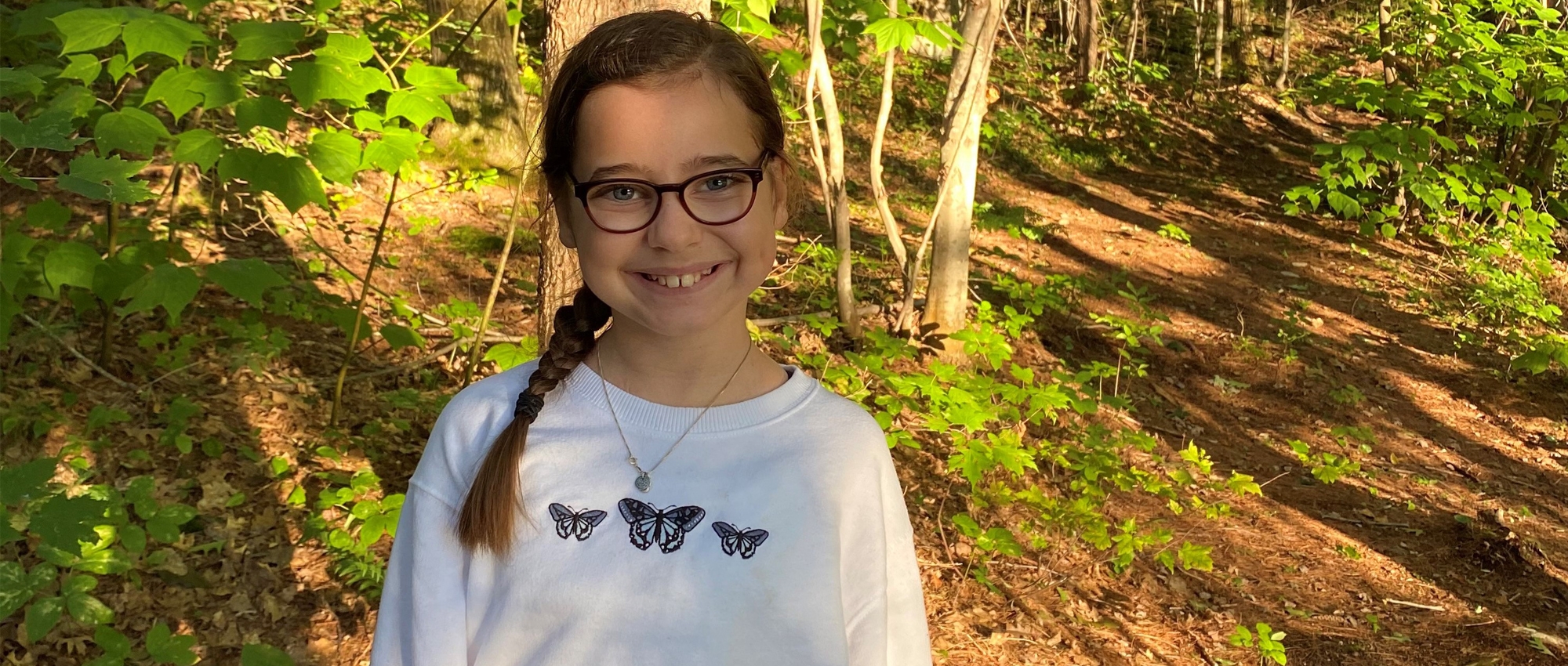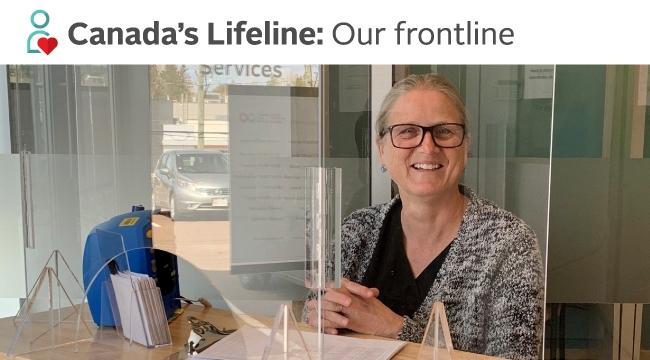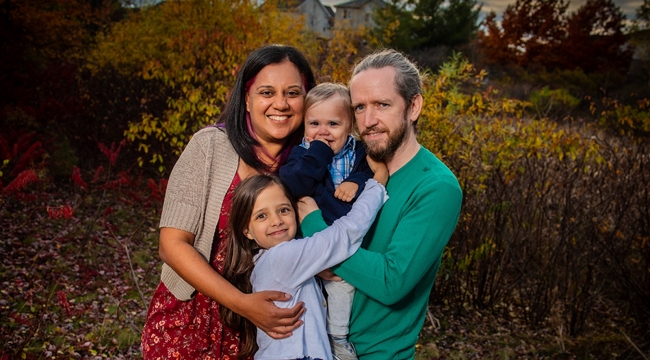A lifesaving kidney transplant during a pandemic, thanks to a former babysitter
Stephanie Jolink’s transplant shows the power of living donation
A 13-year-old Ontario girl is looking forward to a bright future after a lifesaving transplant made possible by a special program for living organ donors ― and a very selfless former babysitter.
Stephanie Jolink was only ten years old when she was diagnosed with chronic kidney failure and faced years of dialysis to keep her kidneys working. She was active in dance, swimming, horseback riding and skating, and a thriving student who loved hanging out with her friends. Several days a week on dialysis at the hospital meant she had to miss a lot of school and social time, and swimming wasn’t possible anymore due to the central line to her heart. Then she learned she needed a new kidney.
Today, Stephanie is looking back on a year of emotional changes: finding a kidney donor last spring, only to find out her surgery was delayed because of the COVID-19 pandemic; then finally going through her life-changing surgery, thanks to her former babysitter and neighbour.
Meaghan Kay had known Stephanie from birth. Being neighbours, the Jolinks and Kays were friends, and Meaghan became the Jolinks’ babysitter. She eventually went away to university and started her career, but she always had a sister-like bond with Stephanie, and clearly remembers the day in 2019 when she found out Stephanie needed a new kidney.
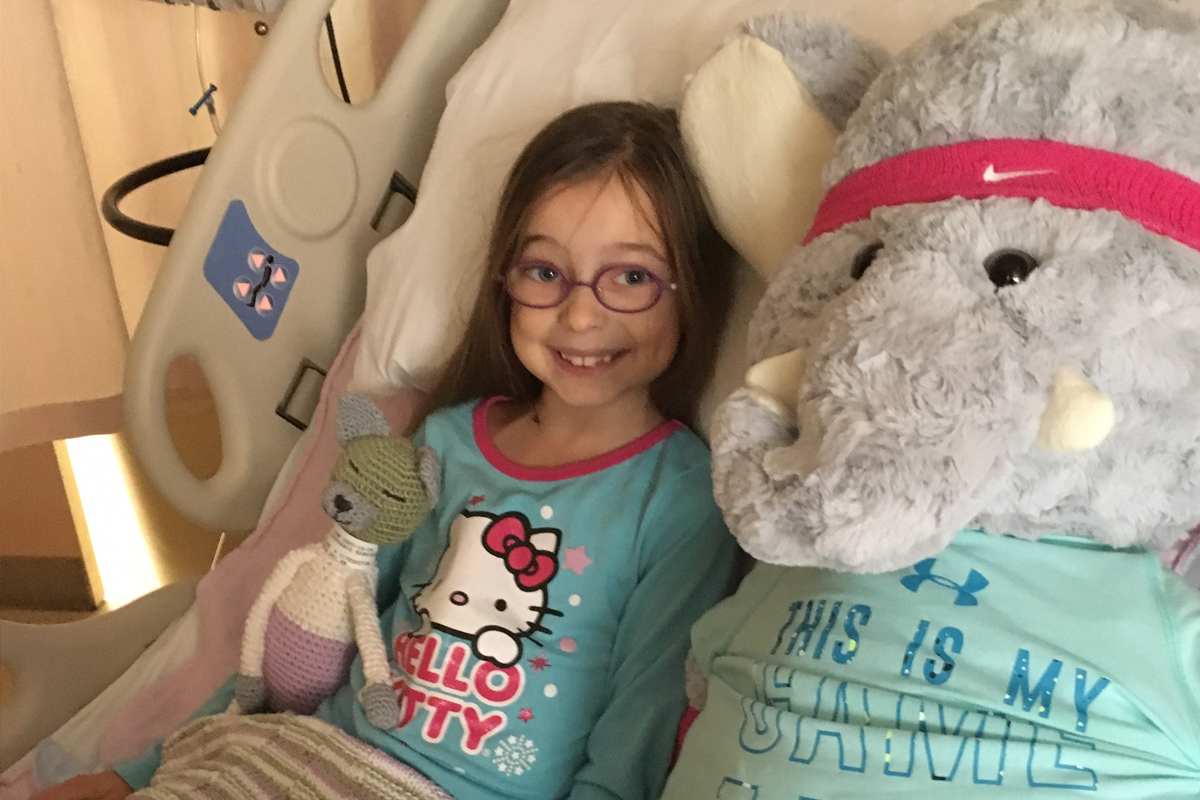
Stephanie at age 10, when she was diagnosed with chronic kidney failure
“My mom learned from Stephanie’s parents that she had double kidney failure and needed a kidney donor,” recalls Meaghan. “And my mom said to the Jolinks, ‘Well you know Meg, she will probably give Steph a kidney, let me call her’. When my mom told me I immediately said, ‘Well, let’s see if she can have mine’.
“I wanted to do this for Steph because she wasn’t leading a normal life of a pre-teen. She had to leave school three days a week to be in the hospital for dialysis and wasn’t able to live a normal life. Especially now that she will be in high school next year, she’s at an important age to become who she’s going to be. She shouldn’t be spending all of that time in the hospital hooked to a machine.”
So, Meaghan started the process to see if she would be a match for Stephanie.
“When I found out Meaghan was going to donate her kidney to me, I don’t know how to describe it. It was amazing she wanted to help me. I was happy she was trying,” recalls Stephanie.
Unfortunately, tests over a period of months revealed they were not a match. But after the initial disappointment, Meaghan learned about a different way she could help Stephanie: through Canadian Blood Services’ Kidney Paired Donation program (KPD).
“One of the most common reasons that a donor and patient come into KPD together as a pair is because the donor may not be compatible, that is, a match, with their intended recipient, as in Stephanie and Meaghan’s situation,” says Sarah Parfeniuk, program manager for KPD at Canadian Blood Services. “An incompatible donor can still help their intended recipient get a transplant by participating in a donor exchange.”
In a paired exchange, like Stephanie’s and Meaghan’s, Donor A wishes to donate a kidney to Patient A, but they are not a match. Donor B would like to donate a kidney to Patient B, but they are not a match. However, Donor A is a match with Patient B and Donor B is a match with Patient A. If both donors commit to proceed, both patients can receive lifesaving transplants.
Initially, Meaghan was unsure. She had her heart set on giving her kidney directly to Stephanie. Then she came to a realization that inspired her to take the step.
“I thought, who cares if it’s not my kidney? Stephanie needs one, it doesn’t have to be mine,” said Meaghan. “If she gets a kidney that’s going to help her and my kidney helps someone else at the same time, why not?”
Soon after Meaghan volunteered to donate, another pair whose recipient Meaghan was compatible with and whose donor matched Stephanie, was identified. Stephanie and Meaghan were looking forward to the surgery that would give Stephanie her new life.
However, like many other patients waiting for a lifesaving organ or tissue transplant last spring, Stephanie learned that her kidney transplant would have to wait as hospitals were dealing with surges of COVID patients. All transplant surgeries scheduled from March to June last year were cancelled, including Stephanie’s and all others facilitated through the KPD program.
“When the pandemic hit, many organ transplantation programs across Canada put in restrictions or were temporarily paused,” says Sarah. “We got back up and running in June when it was safe to continue. As a result of program closures, donation and transplantation activity decreased at a national level starting in March of last year and while activity has resumed, overall, we saw a 12% decrease in deceased kidney donation and a 35% decrease in living kidney donation in 2020 as compared with 2019.”
Hospitals began to adjust in early summer and Stephanie and Meaghan got the green light for their surgeries. Stephanie received her kidney from a stranger, and Meaghan gave her kidney to a stranger – all thanks to the work of the KPD program and the donation and transplant program medical teams, two lives were improved.
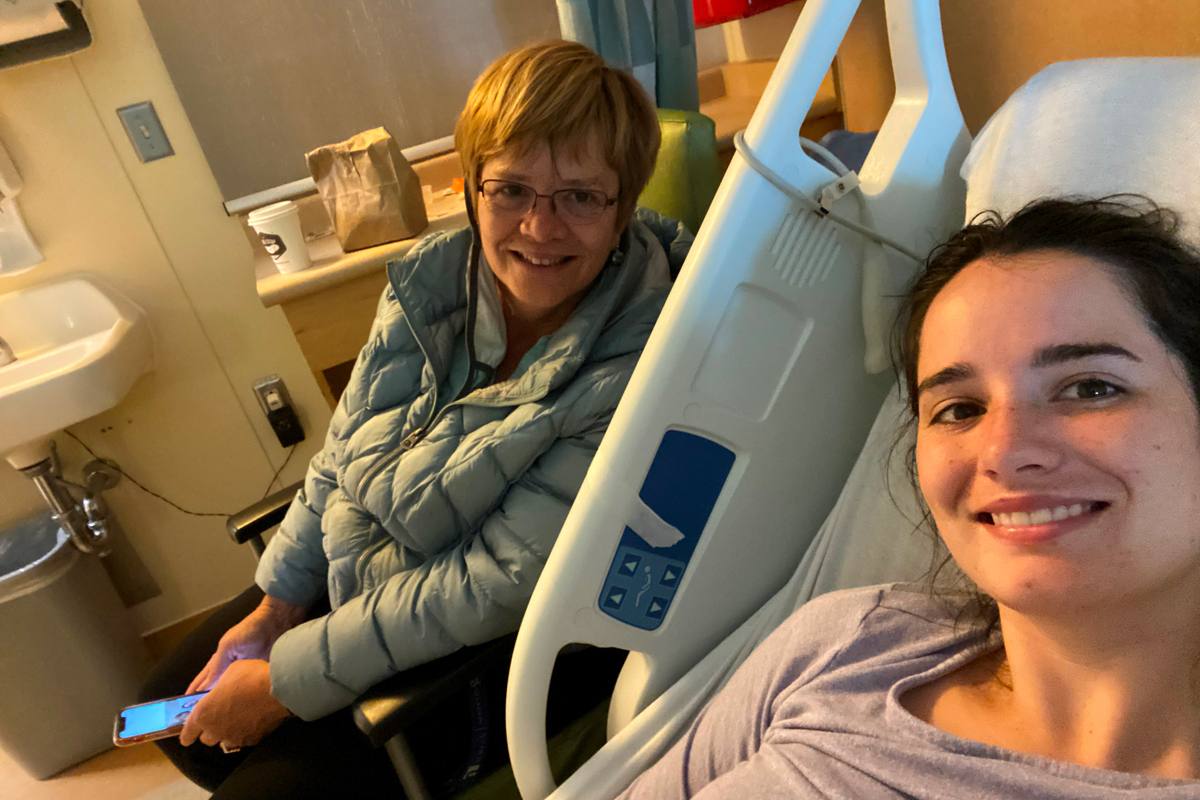
Meaghan recovering from her surgery, had the company of her mom Fiona
“Since I received my new kidney, I’ve been doing good,” says Stephanie. “I returned to school with my friends. I went swimming for the first time in three years. I can’t wait until the summer because I’ll be able to go swimming in the lake at my cottage.”
Meaghan discovered that donating an organ during a global pandemic had some advantages.
“Recovering during COVID was actually nice,” says Meaghan. “We were in lockdown and I wasn’t missing out on anything. Being able to work from home made the recovery process even better because I didn’t have to go anywhere. I highly recommend donating an organ during a pandemic!”
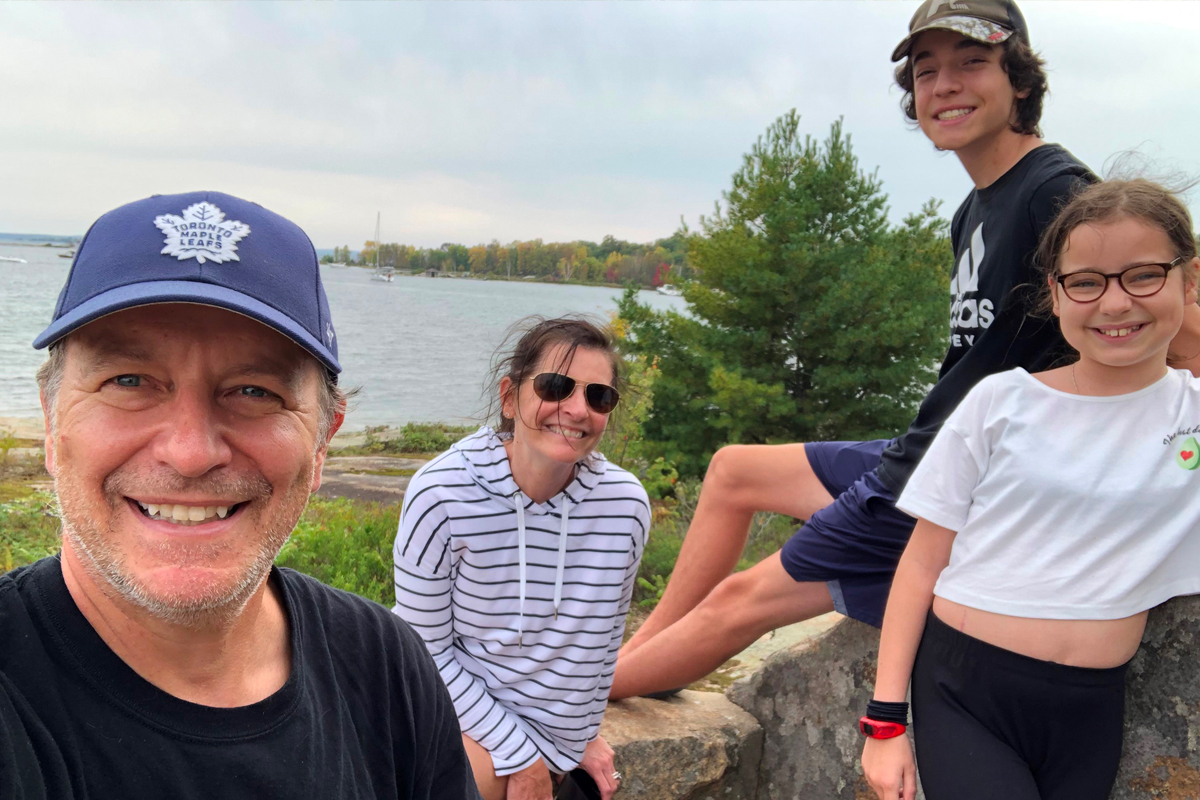
The Jolink family, from left: Dad Greg, mom Christine, brother Sam and Stephanie
Not everyone is lucky enough to find a living donor. Thousands of Canadians waiting for transplants are relying on registered organ donors and on families honouring their loved one’s wishes to donate organs and tissues after death. Unfortunately, the pandemic has had an impact on donor registration too. In 2020, in-person registrations and awareness campaigns were halted because of COVID-19 restrictions, and registrations were down 39 per cent from 2019.
How can I register to donate organs and tissues after death?
How can I become a living organ donor?
“I think everyone should consider being a living donor,” says Meaghan. “The benefits outweigh the cons. You get to help someone that you love through someone you don’t know. It costs you a couple weeks of recovery in return for someone’s whole life. It gives them time to spend with their family and friends and do what they want to do. It costs so little to give such a huge gift.”
Since the KPD program began in 2008, more than 770 transplants have occurred. These are transplants that otherwise would not have been possible.
In 2019, 250 Canadians died waiting for an organ transplant. The COVID-19 pandemic has created even more uncertainty for patients waiting for a transplant. Canadians who have registered their wishes to become donors and who have shared their wishes with their loved ones bring hope to those who continue to wait.
